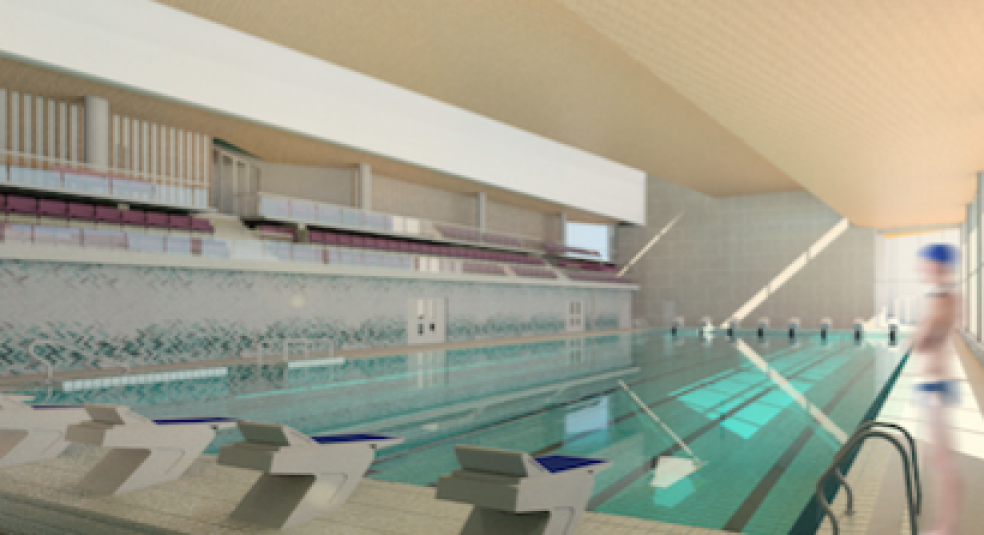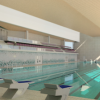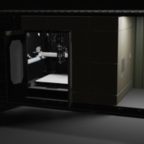
Exeter's new leisure complex will be UK's greenest
Exeter’s planned new state-of-the-art leisure complex in the city centre will be the greenest development of its kind anywhere in the country, the City Council has revealed.
St Sidwell’s Point, which will be at the heart of the redeveloped bus station site, will be Britain’s first Passivhaus leisure centre.
That means it will be an ultra low energy building, saving at least 70 per cent on its energy costs – around £185,000 a year.
The centre’s three pools will also have exceptional water quality, with minimal chemical content.
Emma Osmundsen, Exeter City Council’s Shadow Director (Development) & Client Lead (Build), said the green design makes sound financial sense.
“We are all custodians of our natural environment and I feel strongly about protecting it. I am not your typical ‘tree-hugger’,” she said.
“My decision to adopt very high environmental practices came because it makes good business sense. They’re great for the environment, but the fact of the matter is they’re really good for the public purse.”
Emma has been with City Council for eight years, during which time the city has become an international leader in environmentally friendly building practices, especially Passivhaus.
She said: “Passivhaus is a really rigorous energy standard that ensures a building is low energy. It also provides for a very comfortable internal environment. People look to Exeter as one of the pioneers of the standard in the UK.”
Emma oversaw Britain’s first multi-residential Passivhaus development for Exeter City Council. The authority now gives advice on Passivhaus to cities around the world.
“People are looking to Exeter and wanting to learn from us to see how they could accelerate their own Passivhaus development portfolio,” said Emma.
“They realise we’re very confident in using those standards and also we see that it makes sound business sense. It’s tried and tested. All our projects are monitored so we can ensure the standards we’re setting ourselves are delivered.”
Emma recently spoke at a Passivhaus conference in New York, and is invited to address another in New Zealand.
St Sidwell’s Point will be Britain’s first Passivhaus leisure centre, and value was at the heart of the decision to make the leisure centre so environmentally-friendly.
Emma said: “We’re investing to save. St Sidwell’s Point delivers on three environmental factors. We focus on health with building biology, low energy with Passivhaus and sustainability with being climate ready.”
Emma said St Sidwell’s Point is modelled to withstand predicted changes in climate conditions up to 2080.
She said: “We want to safeguard our assets, so we’re working with Exeter University to ensure the new buildings are climate ready.”
Swimmers at the new leisure centre will notice another benefit.
“In terms of building biology, what will be most noticeable over and above everything else, will be the superior water quality,” said Emma.
“We’re adopting ultra-filtration, the first leisure centre in the UK to do that. It offers swimmers exceptional water quality with minimal chemical content. Swimmers won’t have red eyes or itchy skin and there’ll be less reliance on showers to clean off chlorine.”
St Sidwell’s Point, will be one part of the new St Sidwell’s Quarter, and Emma said the new development will be a great benefit to the city.
“It will create a leisure quarter within the city that will enhance the evening offer of the city centre and extend the economic wealth and economic opportunity beyond just the High Street,” she said.
“With the development of new premises, there will be the creation of new jobs to service them. St Sidwell’s Quarter will entice people from outside the city to come to Exeter for a whole day, rather than just to shop. I think we’ll see the stay time of visitors increasing.”
Emma is proud to be at the forefront of Exeter’s revolutionary approach to environmental-friendly building. “We want to develop public buildings that are the envy of the private sector. We want to show the marketplace what is achievable and what does offer value for money,” she said.
“There’s a big difference between cost and value. We put a lot of emphasis on ensuring that our assets deliver value. That’s value in terms of user experience, but also value in terms of energy savings and value in terms of sustainability of what we’re doing.”
St Sidwell’s Point is due for completion in the winter of 2018.

















